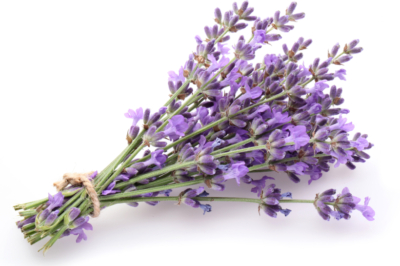Lavender develops its rich bouquet only by drying, moreover, the valuable ingredients are then best preserved. Harvested are only clean and healthy plants or parts of plants, which are best hung upside down in a dry and shady place. Washing herbs before drying is taboo, this of course also applies to lavender.

Contents
Drying lavender
After harvesting, the plant should be dried as quickly as possible, but gently, to best preserve ingredients and aroma. The aim is to remove all moisture from the herb, but without destroying the volatile essential oils. If dried at too high temperatures, their natural degradation will begin. Therefore, it depends on the right combination of temperature and humidity. The ideal temperature for drying is 38 °C, which can only be achieved by special dryers. Ideal conditions are difficult to achieve in the home, so a healthy degree of improvisation is required.
Where to dry lavender?
Well suited drying rooms are little insulated attics, garden sheds or sheds. It is important that the rooms heat up well in the summer and can also be ventilated. The ideal place should be dry, low humidity and also as dark as possible.
Drying lavender leaves
With lavender, it is mainly the young leaves that are harvested, dried and used as a kitchen spice. Shortly before flowering, the delicate leaves have the most intense aroma – like almost all herbs. Cut the leaves together with their stems, bundle them into small bunches and hang them up with the shoot tips pointing downwards. It is important that the individual bunches do not hang too densely; the air must be able to circulate well for quick drying. Larger leaves, on the other hand, are picked individually and laid out on grids or paper. After three to four days, most leaves are thoroughly dry; you can tell when they crackle to the touch. The leaves are then stripped from the stems and crumbled.
Lavender as a kitchen spice
Young lavender leaves flavor fish dishes, stews, soups and poultry. But be careful: use the very aromatic herb sparingly, even small amounts are enough. The dried leaves should also be cooked, as this is the best way to release their aroma. By the way, lavender – especially the flowers – belongs to the traditional herb mixture “Herbs of Provence”. The spice also tastes delicious in herb butter, together with other Mediterranean herbs.
Drying lavender flowers
The flowers are best harvested shortly after they have fully bloomed. Larger flowers are harvested individually and laid out to dry. On the other hand, if the flowers are very small – as is the case with most lavenders – the inflorescences with stems are cut, bundled and dried as described for the leaves. You can then crush the dried flowers, but you can also store them whole and crush them only when you use them. In this way, even more of the intense aroma is preserved.
Mix a fragrance sachet
Whether for the linen closet or as potpourri for a pleasant room scent, why not mix your own fragrance sachet! To do this, mix lavender flowers, lemon balm leaves and rose petals – dried and crushed, of course – in roughly equal proportions and pack this combination in a linen or cotton bag. Tie this loosely and place it in a dry place of your choice. By the way, this mixture, poured over with boiling water and steeped for about 15 minutes – is also great as an additive for bath water.
Proper storage of dried lavender
After drying, the lavender or its individual components are crushed and packed in clean, airtight and opaque containers or paper bags. In this way, dried lavender can be stored for up to one year.
Other ways of preserving lavender
Classically, lavender is preserved by drying it. However, there are other ways to further process fresh or dried lavender. For example, lavender sugar or lavender honey are very popular, as well as aromatic lavender oil.
Sweet lavender
Sugar is great for preserving the wonderful lavender aroma. The flowers (and perhaps leaves) are dried, crumbled and mixed with commercial sugar. This transfers the aroma of the lavender to the sugar. Lavender sugar keeps for a long time and is good for sweetening teas, baked goods and desserts. Lavender honey is also very easy to make. To do so, proceed as follows:
- Heat the honey to about 40 °C so that it liquefies.
- Now mix the liquid honey with the dried lavender flowers.
- Fill the mixture into an airtight jar.
- Store this at a temperature that stays consistent.
- The lavender honey is ready as soon as the flowers have dissolved.
- The honey tastes good as a spread, in tea or in warm milk.
Lavender oil
Lavender oil is also not difficult to make. Fill clean glass bottles halfway with fresh leaves and flowers. Then fill the bottles with a high-quality but tasteless cooking oil and seal tightly. To avoid mold growth, it is important that the herbs are completely covered with oil. The filled bottles should stand in a warm place for about a week. Afterwards, the oil is strained through a cloth and bottled again in clean bottles. If the taste of the oil is not intense enough, the process can be repeated several times. Store the oil in a cool and dark place. If it becomes cloudy, it can no longer be used.
Tips & Tricks
The intensely fragrant lavender is one of the aphrodisiacs – the “plants of love”. No wonder, since the herb is said to have a circulation-promoting, invigorating and stimulating effect.

